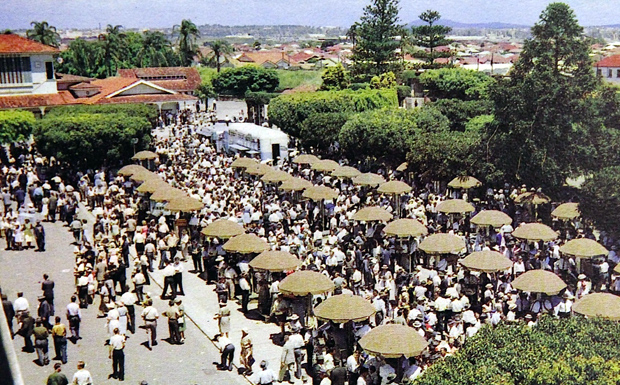
Winx successfully returned to the scene last Saturday. The event was the Warwick Stakes, a traditional pipe opener for Australia’s top echelon with designs on rich Spring pickings.
These days, of course, there is a domineering international flavour that has reshaped the upcoming Melbourne festivals.
Today’s racing fans would find the role Brisbane racing played in the majors in the south just after World War II inconceivable.
One example – the three day Exhibition meeting – is worth revisiting.
In 1946 Russia (the horse, not the country) invaded Brisbane and annexed the weight-for-age National Plate, the Metropolitan and the Exhibition Handicap.
The Ted Hush trained stayer collected a treble for the week and, with Darby Munro aboard, carried nine stone to a very easy victory in that year’s Melbourne Cup.
Flight, that year’s Cox Plate heroine, and Bernborough too were both around Brisbane in 1946.
Russia was the first of three Melbourne Cup winners to grace Eagle Farm in that period.
The following year Hiraji, after picking up placings in the Doomben 10,000 and Cup, ran second in the King’s Cup during Show Week. Them the grey capped off a fine spring by taking out the 1947 Melbourne Cup for Jack Purtell.
The 1948 Melbourne Cup was quinellaed by Rimfire and Dark Marne.
Both of them had wintertime experience in Brisbane.
Rimfire beat all bar Blue Boots and Russia in the 1947 Brisbane Cup while Dark Marne won the 1947 Doomben Cup and was runner-up in the 1948-49 Brisbane Cups.
Basha Felika won the J.H.S. Barnes Stakes at the Exhibition carnival in 1951, and followed up with Caulfield Cup glory two months later.
In 1953, Hydrogen took out the O’Shea Stakes, Brisbane Cup and the Barnes Stakes prior to saluting in the Cox Plate.
Rising Fast, the 1954 Barnes Stakes winner, went on to take out the 1954 and 1955 Caulfield Cups and the 1954 Cox Plate.
He won the 1954 Melbourne Cup and was runner-up in the great race the next year.
What a grand parade of thoroughbreds marched through Brisbane in the immediate post-war years!
The Wednesday Show Day program that used to be a mecca for those in Akubras and RM Williams outfits is now a mecca for a generation decked out in very different designer label gear.
Sadly, the racing is servings of bread and butter.






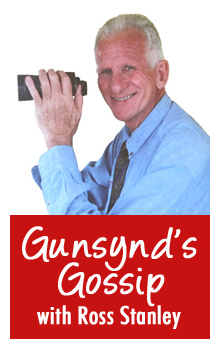

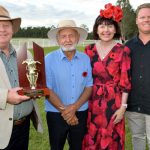
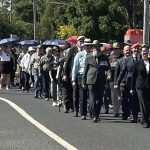
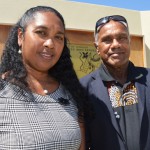

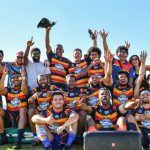












Nice to read about your flashback to racing at Eagle Farm and Doomben.
You spoke about 1946, the year the best horse in my opinion was the Oakey-bred Bernborough.
I was 12 years old and among a crowd of 20,000 that saw this amazing weight carrier with 10st 3lb mow the field down inside the furlong. I remember the late Keith Noud’s call: He’s coming from the clouds — like a tornado.
Then the following week lumping 10st 10lb he won the Doomben Cup in part of his 15 straight victories, taking in the balance of his wins in southern states. It’s interesting to note that on that historic day at Doomben, there were very few cars (not many could afford them) with the crowd arriving by steam engine trains, trams and buses. To save a few pence for something to eat I paid the child’s entrance of 3d to cross the track into the flat area.
I read at the time when the races were over, there were seven trains lined up back past Eagle Farm while 24 trams plus 30 buses were ready to help take the crowd home to all parts of Brisbane.
Then Bernborough’s unblemished record was broken when he failed in the 1946 Caulfield Cup in which jockey Athol Mulley suffered four checks, one going back to last and when in the straight he looked certain to run third, but Mulley swung him back behind a group of horses to finish unplaced. (That race was recorded on Cinesound News). ;Here’s the criteria — while the Toowoomba Terror was quoted at 6/4 and 7/4 among some 40 bookies, there were two fielders who were betting 3/1 EACH WAY about the champion. Stewards at that time ordered the two bookies never to field again in Victoria. But what about Mulley – he wasn’t even asked to front the committee.
Many good judges blamed the horse’s will to win which caused the champ to break his fetlock at next start when Mulley was sacked and Bill Briscoe took the mount.
On that Caulfield Cup day, bookies had markets on the forthcoming Melbourne Cup with the champ scheduled to carry 10st 10lb and was quoted as 6/4 favourite. (No other horse has even been credited with having to carry such weight not excepting that the punters had to take 6/4, the shortest price ever quoted in advance for the two miler – now 3,200 metres).
Before the breakdown he was scheduled to take on the stars in the United States. The late Keith Noud said he was better than Phar Lap and this has always been agreed by myself in that no other horse could have carried such weights continuously to victory. Kingaroy’s veteran sporting identity Bill Oliver also agrees that he was the best.